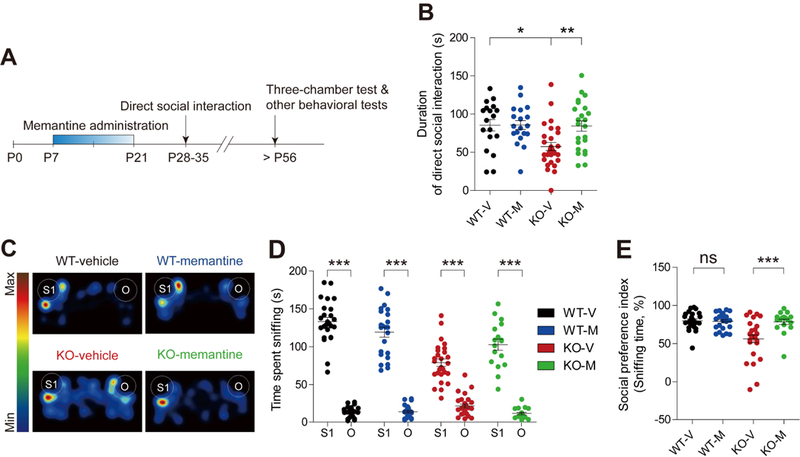Figure 4. Early memantine treatment improves social interaction in juvenile and adult Shank2−/− mice.

(A) Schematic depiction of early memantine treatment. Young Shank2−/− mice were orally administered memantine (20 mg/kg) twice daily for 2 weeks from P7 to P21, followed by measurements of social interactions at juvenile (P28-35) and adult (P56) stages. (B) Early memantine treatment improves social interaction of juvenile Shank2−/− mice (P28-35), as indicated by time spent in social interaction in the direct interaction test. (n = 18 mice (WT-V/vehicle), 19 (WT-M/memantine), 29 (KO-V), and 23 (KO-M), *P < 0.05, **P < 0.01, two-way ANOVA with Bonferroni test). (C-E) Early memantine treatment improves social interaction of adult Shank2−/− mice (> P56), as indicated by time spent sniffing S1/O (stranger mouse/object; D) and the social preference index based on sniffing time (the numerical difference between the time spent sniffing S1 and O divided by their sum x 100) (E) in the three-chamber test. (n =25 mice (WT-V), 24 (WT-M), 27 (KO-V), and 17 (KO-M), ***P < 0.001, Student’s t-test (D-WT/V and D-WT/M), Wilcoxon matched-pairs signed rank test (D-KO/V and D-KO/M), and Mann Whitney U test (E; two-way ANOVA was not performed because the social preference index is a normalized value)).
